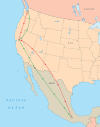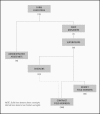An ethnographic study of the social context of migrant health in the United States
- PMID: 17076567
- PMCID: PMC1621098
- DOI: 10.1371/journal.pmed.0030448
An ethnographic study of the social context of migrant health in the United States
Abstract
Background: Migrant workers in the United States have extremely poor health. This paper aims to identify ways in which the social context of migrant farm workers affects their health and health care.
Methods and findings: This qualitative study employs participant observation and interviews on farms and in clinics throughout 15 months of migration with a group of indigenous Triqui Mexicans in the western US and Mexico. Study participants include more than 130 farm workers and 30 clinicians. Data are analyzed utilizing grounded theory, accompanied by theories of structural violence, symbolic violence, and the clinical gaze. The study reveals that farm working and housing conditions are organized according to ethnicity and citizenship. This hierarchy determines health disparities, with undocumented indigenous Mexicans having the worst health. Yet, each group is understood to deserve its place in the hierarchy, migrant farm workers often being blamed for their own sicknesses.
Conclusions: Structural racism and anti-immigrant practices determine the poor working conditions, living conditions, and health of migrant workers. Subtle racism serves to reduce awareness of this social context for all involved, including clinicians. The paper concludes with strategies toward improving migrant health in four areas: health disparities research, clinical interactions with migrant laborers, medical education, and policy making.
Conflict of interest statement
Figures










Similar articles
-
Structural vulnerability and hierarchies of ethnicity and citizenship on the farm.Med Anthropol. 2011 Jul;30(4):425-49. doi: 10.1080/01459740.2011.576728. Med Anthropol. 2011. PMID: 21777126
-
Influence of indoor work environments on health, safety, and human rights among migrant sex workers at the Guatemala-Mexico Border: a call for occupational health and safety interventions.BMC Int Health Hum Rights. 2018 Feb 2;18(1):9. doi: 10.1186/s12914-018-0149-3. BMC Int Health Hum Rights. 2018. PMID: 29394893 Free PMC article.
-
The clinical gaze in the practice of migrant health: Mexican migrants in the United States.Soc Sci Med. 2012 Mar;74(6):873-81. doi: 10.1016/j.socscimed.2011.06.067. Epub 2011 Sep 8. Soc Sci Med. 2012. PMID: 21992736
-
Experiences of nurses caring for involuntary migrant maternal women: a qualitative systematic review.JBI Evid Synth. 2022 Nov 1;20(11):2609-2655. doi: 10.11124/JBIES-21-00181. JBI Evid Synth. 2022. PMID: 35972056
-
The health of U.S. hired farm workers.Annu Rev Public Health. 2003;24:175-93. doi: 10.1146/annurev.publhealth.24.100901.140901. Epub 2001 Nov 6. Annu Rev Public Health. 2003. PMID: 12359914 Review.
Cited by
-
Occupational conditions and well-being of indigenous farmworkers.Am J Public Health. 2008 Nov;98(11):1956-9. doi: 10.2105/AJPH.2007.124271. Epub 2008 Sep 17. Am J Public Health. 2008. PMID: 18799774 Free PMC article.
-
Study of Migration and Later Life Health in Nepal.J Migr Health. 2020;1-2:100018. doi: 10.1016/j.jmh.2020.100018. Epub 2020 Dec 5. J Migr Health. 2020. PMID: 34322677 Free PMC article.
-
Hispanic migrant farm workers' attitudes toward mobile phone-based telehealth for management of chronic health conditions.J Med Internet Res. 2013 Mar 30;15(4):e76. doi: 10.2196/jmir.2500. J Med Internet Res. 2013. PMID: 23624105 Free PMC article.
-
Exploratory study of the occupational health and health-seeking of migrant and seasonal farmworkers on the U.S.-Mexico border.J Immigr Minor Health. 2012 Aug;14(4):648-56. doi: 10.1007/s10903-011-9503-4. J Immigr Minor Health. 2012. PMID: 21789560
-
Training Mixtec promotores to assess health concerns in their community: a CBPR pilot study.J Immigr Minor Health. 2014 Apr;16(2):310-3. doi: 10.1007/s10903-012-9709-0. J Immigr Minor Health. 2014. PMID: 22940912 Free PMC article.
References
-
- Migration trade and development. Migration News. 2003;10:1. Available: http://migration.ucdavis.edu/mn/more.php?id=39_0_5_0. Accessed 27 September 2006.
-
- Sassen S. Globalization and its discontents. New York: The New Press; 1998.
-
- Bustamante JA. Mexican migration: The political dynamics of perceptions. In: Reynolds C, Reynolds C, editors. U.S.-Mexican relations: Economic and social aspects. Stanford (California): Stanford University Press; 1983.
-
- Census, INS: Data. Migration News. 2002;9:4. Available: http://migration.ucdavis.edu/mn/more.php?id=2551_0_2_0. Accessed 27 September 2006.
-
- Espenshade T. Unauthorized immigration to the United States. Am Sociol Rev. 1995;21:195–216. - PubMed

